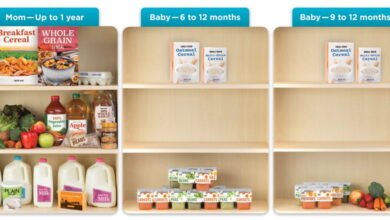One Last Goodbye: How to Make a Meaningful Goodbye Card

It is one of the most painful and hard times that people have to go through. Whether it’s a good bye with a colleague, a close friend moving away or family member moving to a new journey, these moments tend to arise with all sorts of emotions, such as sadness and nostalgia, or hope and excitement. A card is something tangible that shows the bonds we have and writing a meaningful one is the best expression of feelings, which are sometimes difficult to put into words. In this article, we are going to explore the importance of goodbye card, tips for creating heartfelt messages, design ideas, and different ways to personalize your farewell card.
Why Goodbye Cards?
1. Emotional Connection
Goodbye cards provide the opportunity to express thoughts that may be impossible to say. Helping them recall their relationship with you and all the memories they have shared with you is how goodbye cards work. A well-written message creates warmth and nostalgia and can be one of those keepsakes for them to be remembered by.
2. Closure
The goodbye card could be the final message, and would ultimately conclude for both the sender and recipient. Even the relationship may be remembered for its time and experiences shared. The sender may relate their feelings, which may be put into words; the recipient may hold that little piece of the relationship for a little while longer.
3. Celebration of Memories
Rather than talking about how sad it is when one says goodbye, the goodbye card is a happy remembrance of good times that have passed. It can talk about how good times are shared and comfort the mind in these moments of transition with such memories.
4. Cheer and Good Luck
Goodbye cards are also an exit manner of wishing the recipient well for whatever they may do later in their lives. It inspires the person to look ahead at what is to come rather than dwelling on past things, because it brings along hope and positive thinking.
How to Write an Effective Goodbye Message
A good goodbye card message begins with good words. Here are several ideas which you can consider in writing your perfect goodbye card message:
1. Begin with a Greeting from the Heart
Begin with a warm opening that touches the heart of your relationship with the recipient. Use his or her name or an affectionate term both of you share. Example:
Dear Sarah,
To my dearest friend, John,
To my favourite colleague, Emily,
2. Share Your Feelings
Do not just pour out the undiluted words. If you are sad or happy or you have mixed emotions, then honesty speaks more than any hackneyed phrase. You may say:
“I cannot believe the day has finally come for us to bid our farewells. It’s just a little bittersweet.”
“While I am excited for your new adventure, I shall miss you more than words can say.”
3. Shared Memories
Make your card personalized by recalling some memorable moments you’ll be sharing with each other. It will also comfort them. For example:
I shall never forget the camping time under the stars. Late-night talks are a treasure for me that will never be forgotten.
From coffee breaks to brainstorming sessions, every moment spent with you was making my days lighter.
4. Present a New Message of Hope
End your message with a positive note by providing encouragement for their new journey. Make them believe in themselves. For instance:
“I know you will absolutely shine in your new job. They are so lucky to have you!”
“Welcome this new chapter with your open arms. Can’t wait to hear of your adventures!”
5. End with Warmth
End your card with a warm closing that reinforces your bond. Closing offs include:
“All my love”,
Yours always,
Forever in my heart,
6. Personal Touch
Consider the signing with a personal nickname, as well as adding a small doodle or drawing that reflects your relationship. This gives it an intimate touch as you write your goodbye card.
How to Design Your Goodbye Card
Well-designed playing cards can make a big difference. Here are some ideas about how to design your goodbye card:
1. Decide on the form of your card.
You can go for an old-fashioned folded card, a postcard, or even an electronic card if your recipient is technologically active. Each form lends itself to some different opportunities for design.
2. Choose Colors and Themes
Choose a color palette that represents the emotions you want to convey. More delicate pastel colors can create that nostalgic, olden-dough memory; brighter colors say excitement and hope. You might even consider thinking about themes interested in or represented through relationships, such as travel, the outdoors, or common hobbies.
3. Personal Photos
A memorable photo makes your card meaningful. This can be a group picture, candid shot, or any location. Whatever it is visual in nature, no doubt it’s sure to bring memories.
4. Handwritten Elements
If you can, print your message by hand. Handwritten notes have a warmth to them that printed words often lack. To add a personal touch if creating an e-card, you can use a font that is similar to your handwriting.
5. Add Decorations
Add decorations such as stickers, drawings, and stamps that may reflect the personality of the recipient or something special you may have shared together. You might use:
Floral designs if she loves gardening.
Travel-inspired stickers for a friend moving to another city
Sarcastic and funny graphics for a playful friend
Making it special by adding Quotes and Poems
1. Add some meaningful quotes or short poems
A quote or even a small poem will make your card more deep and emotional. Select words that involve your experience, or the words that define your relationship. Here are some examples:
Quotes
“Don’t cry because it’s over, smile because it happened.” – Dr. Seuss
“Goodbyes are not forever; they simply mean I’ll miss you until we meet again.” – Anonymous
Short Poems:
“Though distance may part us, our memories will remain. In my heart, you’ll always have a special place.”
2. Create a Memory Collage
Or, if you feel crafty, put a mini memory collage inside the card. Attach very small pictures, ticket stubs or hand-written notes of some memorable experience you have had together; it’s just beautiful.
3. Make It Interactive
Insert a small game, puzzle, or a “fill-in-the-blank” section in your card which the recipient can do and enjoy. For example, you could include:
Things you want to do together before they leave
Small crossword with clues that might relate to your experiences.
Alternative Ways of Presenting Your Goodbye Message
1. Group Goodbye Cards
If the group of friends or team is leaving a friend, then a card in the group is the best idea. Everyone can add their message, photo, or memory. It can create a large card or use an online source to design a digital group card.
2. Video Message
In place of, or as an addendum to, a card, compile a short video message that captures clips from friends and colleagues stating their wishes for your good health and safe travel, or saying goodbye, in the case of a leaving present. This can be a very moving way to send someone off, and can be kept as a keepsake.
3. Memory Book
Instead of an ordinary card, create a memory book for an individual who is very special. This would have pictures, writings, and souvenirs from various friends and family members, thereby providing an additional larger collection of memories.
Conclusion
A meaningful goodbye card allows you to remember your past; it helps you celebrate your memories and give the heartfelt sentiment you so wish for them to know. Whether it’s to a colleague, friend, or loved one, the efforts that go into writing a letter and designing with their name will be much appreciated. Remember, though, that the most important thing here is honesty and heart. Your goodbye card could be a treasured reminder of the bond shared and an object to comfort when change comes knocking on your door. So take your own good time, think clearly, and then build something fantastic that really leaves an impression in peoples’ lives.




